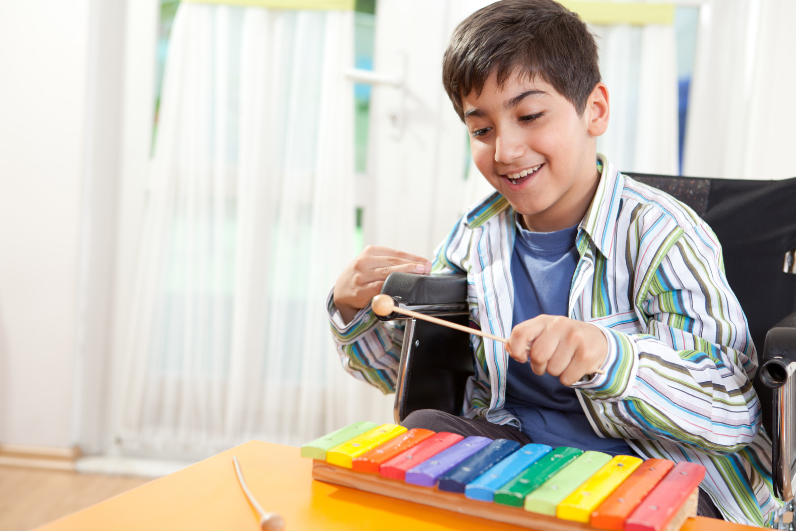Can you finish this lyric? “The wheels on the bus go...”
How about this one? “R-E-S-P-E-C-T….”
Now try to remember where you were when you heard the most amazing version of the national anthem. Do you remember who you were with? What was the weather like that day?
There are reasons why some of us can recite the names of the 50 states via song more accurately than simply listing them aloud. The main reason being the power of music!
Music has been created, adored, and taught throughout our history. Where one might not expect it to also be created, adored and taught, is in speech and language therapy.
Most can agree on the power that communication provides an individual. Communication is essential, has many modes and holds the key to success in life. When Speech Therapists combine the power of communication with the learning power of music, it creates an incredible scenario for speech and language development.
Speech-Language Therapists often use music in their therapy sessions with the intention of supporting their patient’s communication skills. Music is FUN, highly memorable, flexible, and available in many settings to promote generalization of learned skills.
“A recent study showed that children displayed significant improvement in their problem-solving skills, social skills, and how they interacted with others when music was a part of their speech therapy treatment plans.”
Play is an important factor in speech and language therapy sessions also, most commonly used with school-aged patients, and when used along with music, it offers opportunities to learn in a relaxed, natural manner.
Play is powerful on its own due to its naturalness and wide range of possibilities, while needing very few resources to create meaningful, communicative interactions. Music is similar to play as it is known to alter a person’s mood. When playing and using music, confidence can easily be built and strengthened all while learning how to communicate.
Another benefit to using music in speech-language therapy is these activities don’t require specific instruments in order to learn and create something meaningful. A wooden spoon on the back of a tupperware bowl is just as fun as a drum!
The ease of access to items in households, such as a spoon and tupperware bowl, means that families can quickly get involved with their child’s learning journey by practicing at home. This encourages carryover from the speech-language therapy session to the child’s natural settings such as their home, family members’ homes, the park, etc.
Next time you and your child are playing together, try modeling a word or a phrase with a sing-song manner and watch how quickly they will imitate and remember.
Communication development is incredibly and positively affected when music is involved.
Author: Amber Graber M.S., CCC-SLP

